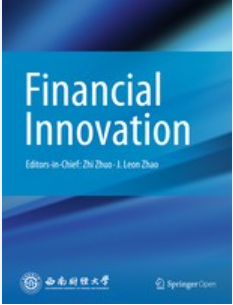能源和金属市场之间的实际波动溢出效应:时变关联性方法
IF 7.2
1区 经济学
Q1 BUSINESS, FINANCE
引用次数: 0
摘要
本文采用 Antonakakis 等人的时变参数向量自回归关联性方法(J Risk Financ Manag 13(4):84, 2020),分析了 COVID-19 前后能源和金属商品价格之间的动态关联程度。结果表明,在 COVID-19 爆发后,市场互联性略有增加,但与 2008 年全球金融危机后观察到的市场互联性相比,这种增加较低且持续性较差。此外,我们还发现,在 COVID-19 爆发之前,原油是冲击的主要净传播者,而在 COVID-19 大流行期间,取暖油、黄金和白银则是冲击的主要净传播者。与此相反,天然气和钯在整个样本期间是冲击的主要净接收者,这两种商品在大流行期间对投资者来说是有吸引力的对冲和避险选择。总体而言,我们的研究结果表明,危机期间对冲和分散投资的机会减少。此外,这些结果还表明,利用原油的信息含量,可以准确预测天然气和不同金属等几种商品的波动性。不过,它们也揭示出,在 COVID-19 大流行期间,原油失去了其作为净冲击传播者的领先地位。本文章由计算机程序翻译,如有差异,请以英文原文为准。
Realized volatility spillovers between energy and metal markets: a time-varying connectedness approach
This paper analyzes the degree of dynamic connectedness between energy and metal commodity prices in the pre and post-COVID-19 era, using the time-varying parameter vector autoregressive connectedness approach of Antonakakis et al. (J Risk Financ Manag 13(4):84, 2020). The results suggest that market interconnectedness increased slightly following the outbreak of COVID-19, although this increase was lower and less persistent than that observed after the Global Financial Crisis of 2008. Furthermore, we find that crude oil was the main net transmitter of shocks before COVID-19 while heating oil, gold, and silver were the main net transmitters of shocks during the COVID-19 pandemic. In contrast, natural gas and palladium were the main net receivers of shocks during the entire sample period, making these two commodities attractive hedging and safe haven options for investors during the pandemic. Overall, our results suggest that hedging and diversification opportunities decrease during crises. Furthermore, they indicate that accurate forecasts of the volatility of several commodities, such as natural gas and different metals, can be obtained by exploiting the information content of crude oil. However, they also reveal that crude oil lost its leading position as a net shock transmitter during the COVID-19 pandemic.
求助全文
通过发布文献求助,成功后即可免费获取论文全文。
去求助
来源期刊

Financial Innovation
Economics, Econometrics and Finance-Finance
CiteScore
11.40
自引率
11.90%
发文量
95
审稿时长
5 weeks
期刊介绍:
Financial Innovation (FIN), a Springer OA journal sponsored by Southwestern University of Finance and Economics, serves as a global academic platform for sharing research findings in all aspects of financial innovation during the electronic business era. It facilitates interactions among researchers, policymakers, and practitioners, focusing on new financial instruments, technologies, markets, and institutions. Emphasizing emerging financial products enabled by disruptive technologies, FIN publishes high-quality academic and practical papers. The journal is peer-reviewed, indexed in SSCI, Scopus, Google Scholar, CNKI, CQVIP, and more.
 求助内容:
求助内容: 应助结果提醒方式:
应助结果提醒方式:


